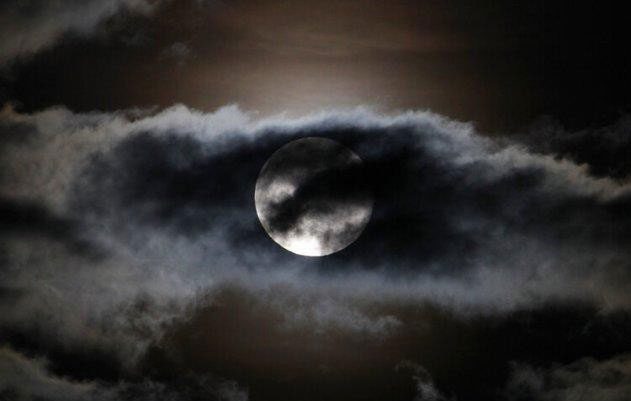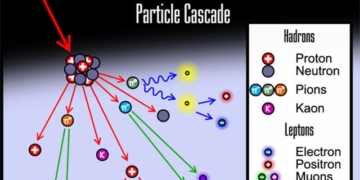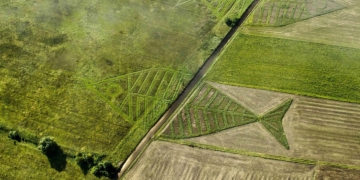On certain days in May, around the year 1110, the Moon completely vanished from the Earth’s sky. This unusual phenomenon from a millennium ago continues to puzzle astronomers to this day.
The relationship between the Earth, the Moon, and the Sun has been recorded since ancient times. The bright yellow light of the Sun greets humanity and is seen as the dawn of a new day, while the gentle white light of the Moon lulls us to sleep each night.
But what would happen if one of these celestial bodies suddenly disappeared one day? What if that day lasted for weeks or even months?

The Moon of the Earth
Such an event occurred nearly a millennium ago, when the Earth’s Moon disappeared from view for many days in May, around 1110 – a time that remains unspecified due to the lack of records from that era. The mystery remained unsolved until recently. Some believe that the Moon’s disappearance was simply the result of a lunar eclipse. However, the truth is more complex than that.
British astronomer George Frederick Chambers wrote about this event in his book published in 1899. Approximately 800 years after it occurred, Chambers pinpointed the date of the Moon’s disappearance to May 5, during the reign of King Henry I (without specifying the year).
“The entire event occurred before midnight,” Chambers wrote, “this is clearly an example of a ‘black’ lunar eclipse – when the Moon becomes quite invisible instead of glowing the familiar copper color.”
But is that really what happened?
Discovering the cause of the Moon’s absence became a research project in 2020 published in the journal Scientific Reports, leading to a more complicated answer than we might think.
Scientists had previously speculated that a volcanic eruption of Hekla in Iceland was to blame. Mount Hekla, located in the southernmost part of Iceland, was referred to by Europeans as “the Gateway to Hell” during the Middle Ages due to its frequent eruptions.
When a major eruption occurred at Hekla around October 15, 1104, sulfur particles were released into the atmosphere. For many years, this incident was believed to be the reason behind the Moon’s disappearance mentioned earlier.
However, new research from a team at the University of Geneva (Switzerland) began to unveil some new information. To determine whether the Hekla eruption was the sole cause of the Moon’s disappearance, researchers analyzed ice cores from Iceland and Antarctica, ultimately concluding that the date of the Hekla eruption did not coincide with the timeline of 1104 but was later, in 1110.
To uncover the true origin, they examined medieval records for any documentation related to “dark lunar eclipses” or “black solar eclipses.” After extensive searching, the team made a breakthrough with a passage from the Peterborough Chronicle in 1110: “The Moon was extinguished completely to the extent that no light, sphere, or anything else was visible.”
Knowing that the Moon’s absence began around 1110, the research team proposed that a cluster of volcanic eruptions from 1108 to 1110 was likely the real cause, rather than the Hekla eruption of 1104 as previously speculated.
One of the key findings related to a forgotten eruption that occurred in 1108 on Honshu Island, Japan. A record from a Japanese politician, discovered and cited by the researchers in the Scientific Reports study, states that a massive eruption of Mount Asama in Honshu began in late August 1108 and continued until October of that year.
“On August 29, the volcano erupted, and fields and rice paddies everywhere became unmanageable,” he wrote. “We have never seen anything like that in the country. It was very strange and rare.”
The 1108 eruption at Asama, referred to by the research team as “one of many major volcanic events” explaining “the aerosol levels in the stratosphere, sufficient to cause a dark lunar eclipse”. It is important to note that this was a climate phenomenon of global scope, which pre-scientific times were not equipped to record and explain.
The volcanic eruptions from 1108-1110 led to several social impacts in Europe, particularly in agriculture. Researchers also described numerous instances of harsh cold weather conditions, crop failures, and famine. Thus, the disappearance of the Moon was a consequence of volcanic eruptions, but most people at the time were unaware of this. They could only interpret it as a “bad omen” coinciding with crop failures and climate change, alongside the Moon losing its light.





















































